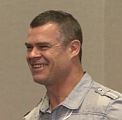EAP, THE ECOLOGICAL ACCOUNTING PROCESS, IS A FINANCIAL TOOL TO HELP STREAMS SURVIVE: “We are in a 3-year transition strategy to embed EAP at Vancouver Island University. We can see the many directions EAP could take,” stated Anna Lawrence, Project Coordinator, Mount Arrowsmith Biosphere Region Research Institute at VIU

“There are so many different parts to EAP. And with each part you can go down a distinct pathway that helps local governments. I am very focused on the 3-year transition strategy because Year One was just trying to absorb as much knowledge as possible. It was a juggling process with many moving parts and trying to keep them all in balance. But Year One is now behind us. We are envisioning other areas of research as potential EAP projects.. And so, we look forward to sharing our EAP experience at the BC Land Summit,” stated Anna Lawrence.










